When I first moved to California, the house we rented had a mature Fuyu persimmon tree in the front yard. I had never tasted them before and didn’t know what to make of them or even how to eat a persimmon.
It wasn’t long before the tree’s boughs began to bend with the weight of plump fruit, and I suddenly had a bumper crop of ripe persimmons to contend with.
The first thing I did was slice one like an apple and gingerly taste it. It was sublime. Sweet, crunchy and as vibrant as its bright orange skin. Not only can you eat them like an apple, but you can also cut them in half and scoop out the fruit with a spoon.
Persimmons, sometimes known as Sharon Fruit, are now one of my favorite fruits, and I look forward to their arrival in farmers’ markets each fall. Try one and I’m confident you will become a devotee, too.
How Do You Eat A Persimmon?
Now, if you already have your fruit and know whether it’s a fuyu or hachiya, here are some tips for how to eat a persimmon:
1. Rinse the skin thoroughly, or peel it off. A persimmon’s skin is edible and should be completely washed before consuming. Wash your persimmon under running water, and dry the outside of the skin with a clean towel.
2. Cut off the green leaves. Using a knife, cut off the leaf-like flower and stem.
3. Fuyu persimmons are best when they are firm. Prepare them like you would raw apples. Cut the persimmon in half, from the stem to the tail, to split the core into two halves. Then, cut each half of the persimmon into thin rounds or wedges.
4. Hachiya persimmons are best when they are mushy. Prepare them like you would raw avocado. Cut the persimmon in half and scoop out the soft flesh from each half. Or, cut off the top, like a soft boiled egg, and eat the gelantinous flesh from the remaining “bowl.”
Persimmon Basics
Lee Reich, Ph.D., a farmdener (more than a gardener, less than a farmer) and author of The Ever Curious Gardener, has devoted much time and thought to persimmons. He notes that although eating persimmons is quite popular in Asia, few people outside Asia are familiar with—let alone grow—persimmons.
Why? There are three reasons: First, because they are somewhat hard to transplant (but not hard to grow). Second, because many cultivars are too soft for commercial shipping. And third, because the unripe fruits of some cultivars are considered astringent persimmons.
“Eating a thoroughly ripened persimmon is as pleasurable a gustatory experience as eating an unripe one is horrible,” Reich says in his book.
“The best fruits of either species have a soft, smooth, jelly-like texture, a honey-like sweetness, and a richness that is akin to apricot. In some cultivars, ripe fruits are so soft as to be almost liquid inside the skin … The fruits are very much the size and shape of tomatoes—small tomatoes (an inch or so across), in the case of the American persimmon—in colors ranging from pale yellow through orange, to crimson and deep red. The American persimmon … [has] a richer flavor, something like a wet, dried apricot that has been drizzled with honey and given a dash of spice.”
Two Types Of Persimmons
Tony Smith, owner of Nursery Enterprises in Rexburg, Idaho, has extensive experience growing and eating persimmons.
A fan of the fruit, Smith notes: “Some of the most nutritious, enjoyable, and exotic foods at the grocery store are fresh persimmons. Don’t let the mystique of persimmons intimidate you. You can easily grasp the concepts of how to eat them.”
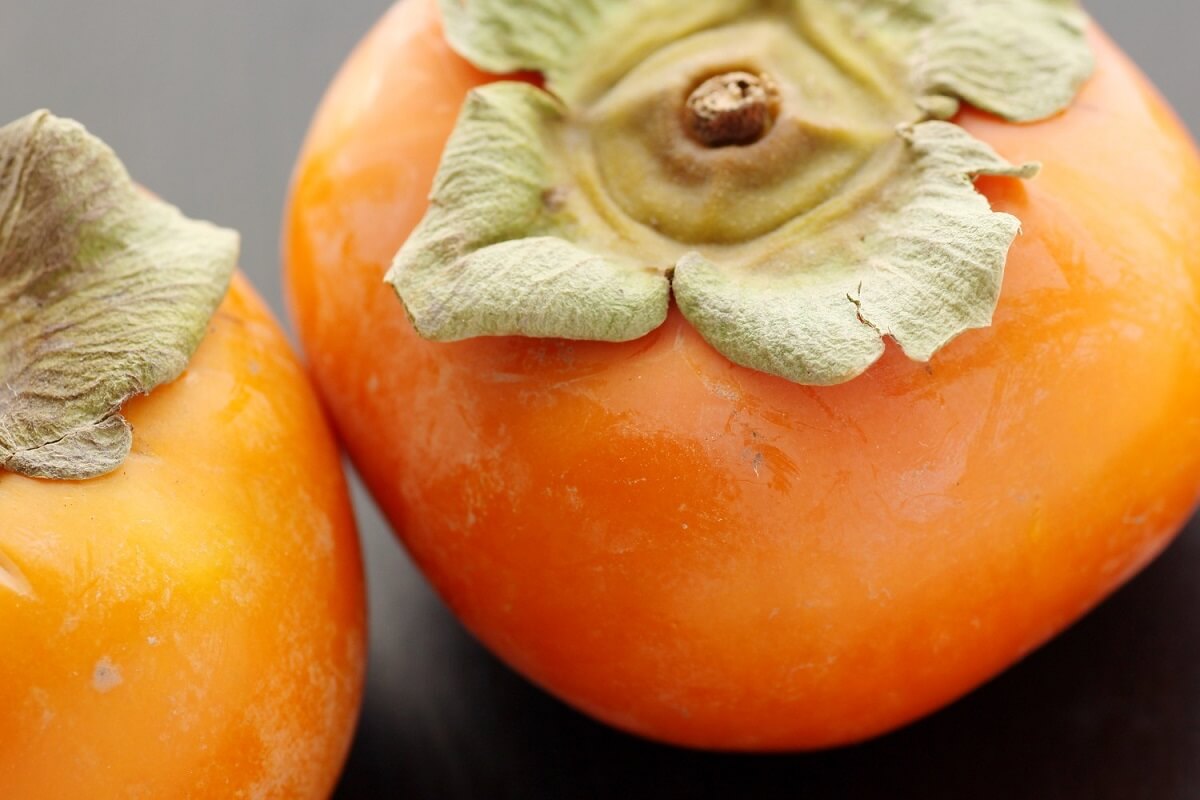
In the United States, there are generally two types of commercially available persimmons, and they are quite different:
- Fuyus (non-astringent) are flat, round and best eaten while still firm, like an apple.
- Hachiyas (astringent) are elongated with a pointy tip and should only be eaten when fully ripe and quite soft.
How To Tell When Persimmons Are Ripe
Persimmons are an autumnal fruit that is found midsummer through late fall. When they’re at peak ripeness, not much compares to eating a persimmon fresh and unadorned.
But, as mentioned, you will not be happy to eat a Hachiya that is not fully ripe, given their unpleasantly acidic composition prior to ripening. The best way to ensure your Hachiya is fully ripe is by touch.
How Do You Know If A Persimmon Is Ripe?
When they are soft, squishy and ready to burst (many people say they resemble water balloons when ripe), they’re ready to eat. If you like your fruit soft and juicy, like a ripe peach, Hachiyas are for you.
A ripe Fuyu will be firmer and crisp. For this reason, salads will generally call for Fuyus. So, if you like your fruit crisp and sweet, like an apple or a pear, Fuyus are a good bet.
How To Buy And Store Persimmons
When choosing persimmons, look for ones that are deep red or orange, have glossy, smooth skin and have their green leaves intact.
Tony Smith recommends buying both types of persimmons while they are still hard and crunchy. You can cut both Fuyus and Hachiyas into slices and eat them fresh. “The skin is edible, but some prefer to only eat the inside,” he notes. “Don’t eat the leafy part on top …. [Hachiyas] are sometimes so gooey that it’s like eating pudding from a bowl—delicious!”
Given that immature persimmons are unpalatable, many people suggest selecting them when they’re ripe with sweet flesh and eating them as soon as possible. It is, however, also possible to buy firmer fruits and allow them to ripen at home. You can leave them at room temperature or accelerate the ripening process by placing them in a paper bag with an apple or banana.
For either type, once they’re ripe, store them in the refrigerator until you’re ready to eat them.
How To Dry Persimmons
Should you find yourself with an abundance of persimmons, like I did, the dried fruit is a real treat. It turns out that the dehydration process yields a very concentrated sweetness. Dr. Reich notes that “dried persimmons are a delicacy in Japan and were used as a sweetener before cane sugar became available. Drying removes persimmon astringency naturally and preserves the fruit for winter use.” For drying, he suggests using fruits that are “picked when fully colored but still firm.”
You can slice persimmons into rings and dry them in a dehydrator. Or, for a more low-tech experience, dry them the traditional Hoshigaki way. Dorothy Reinhold has a terrific how-to blog post showing this ancient Japanese process that involves skinning the fruit and hanging it to air-dry in a sunny window for several weeks.
Reinhold notes that both Fuyus and Hachiyas make for delicious dried fruit. “It’s true when the persimmons finish dehydrating, the v-shaped Hachiyas look prettier than the shriveled-up Fuyus. But the difference is only cosmetic.”
Common Uses For Persimmons
Given that Fuyus are crisp and sweet, they are similar to apples and pears. Alison Roman, author of Dining In, loves persimmons for their “demure honey-like sweetness and velvety texture.” Not overly sweet, with no acid to speak of, Roman also loves their bright orange color, their vaguely winter-squash flavor, and their slightly tannic skin.
This means they are perfect for eating raw (try drizzling them with hazelnut or olive oil and honey for a snack), chopping in salads or fruit bowls, and wrapping charcuterie around for appetizers.
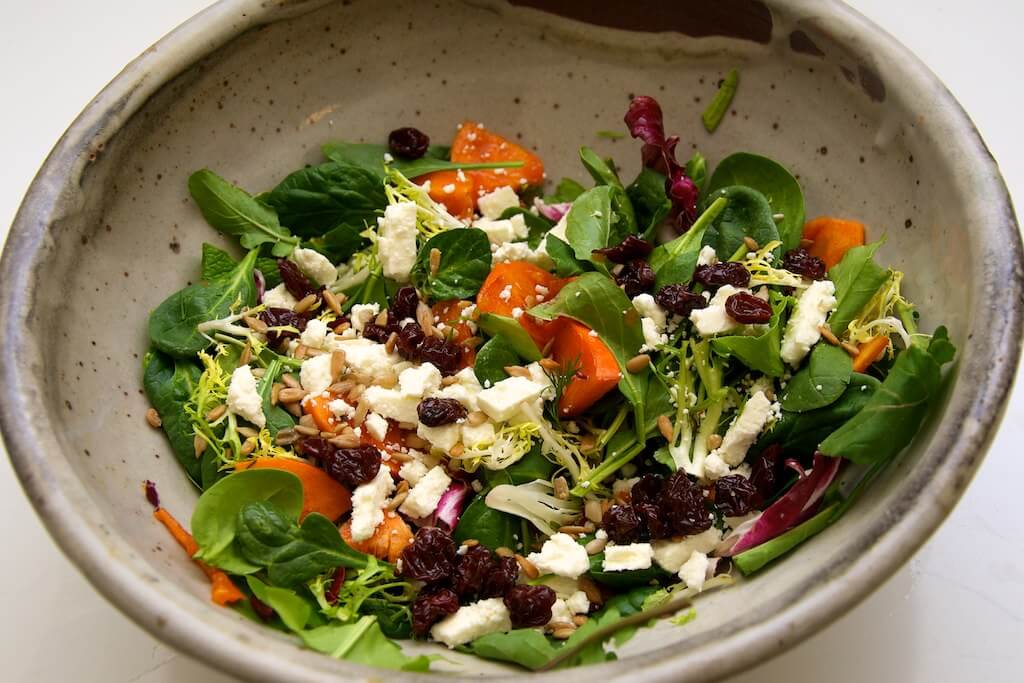
Hachiyas’ soft and mushy texture makes them perfect for cooked dishes such as chutneys, relishes, purees, puddings, and pies.
Related Post: Growing Pumpkins
Chef-Owner Daniel Orr of FARMbloomington in Bloomington, Indiana notes that persimmons get sweeter after the first frost. He suggests enjoying a sweet and spicy First-Frost Local Persimmon Martini made with persimmon purée, (see recipe below) mixed with white pepper, ginger, cardamom, cinnamon, and allspice.
How To Eat A Persimmon: Persimmon Recipes
Here are some of our favorite recipes for persimmon season:
- Hachiya Persimmon Purée – Since many Hachiya persimmon uses call for purée.
- Fuyu Persimmon and Pear Salad with Spicy Pecans and Blue Cheese – This beautiful vegetarian salad is simple, elegant and filled with autumnal color. Adapted from Dining In by Alison Roman.
- Fuyu Persimmon and Duck Salad with Hazelnut-Sherry Vinaigrette – Another classic salad. The Fuyu is perfect for this salad because its sweetness balances the richness of the duck.
- Sauteed Fuyu Persimmons and Green Beans with Chives – An easy, healthy, quick and colorful vegan side dish.
- Hachiya Persimmon Cake with Cream Cheese Icing – A delicious, moist cake that is sure to appeal to everyone.
- Persimmon Ice Cream – Yes, ice cream.
What are your tips for how to eat a persimmon? What are you favorite recipes? Let us know in the comments below!


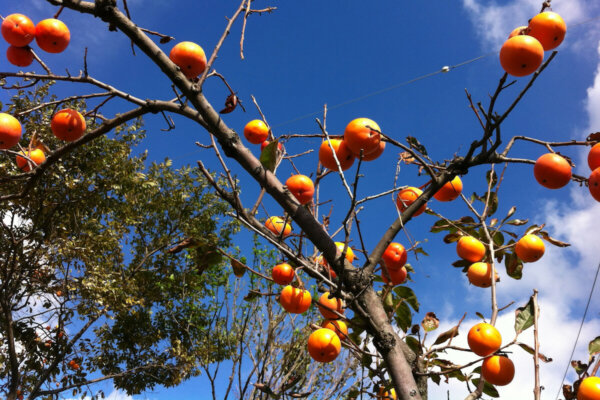
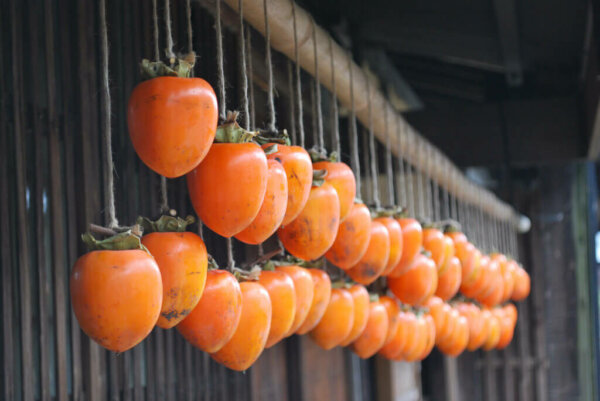
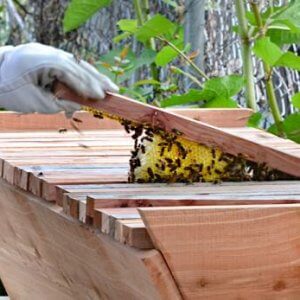




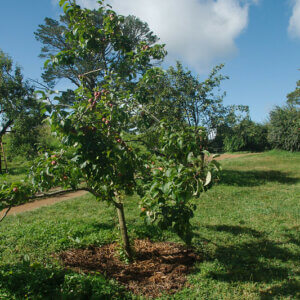



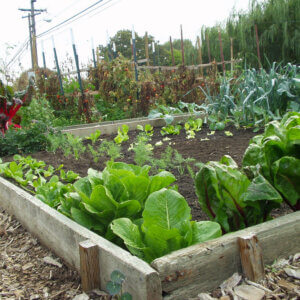

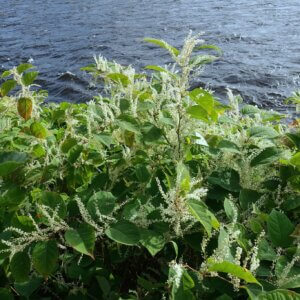
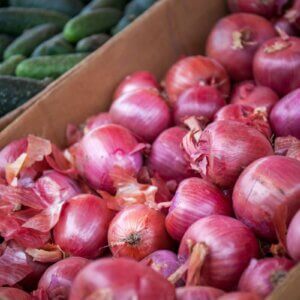







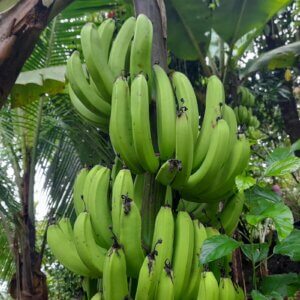
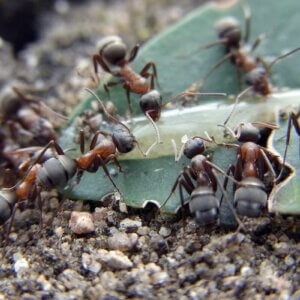
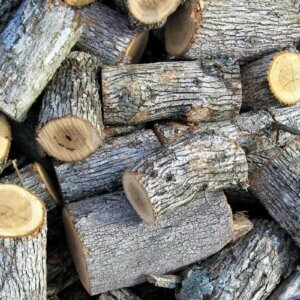


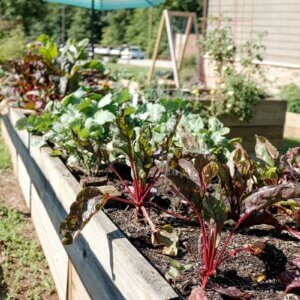
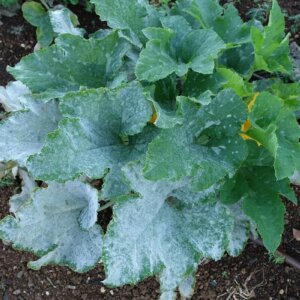


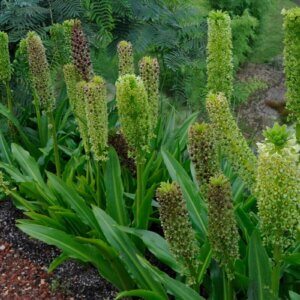
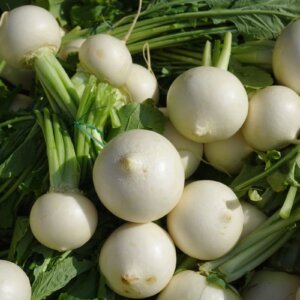

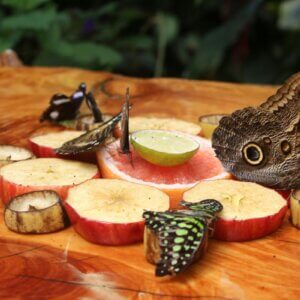

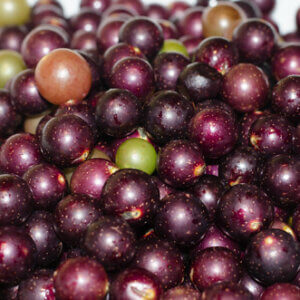





I make Persimmon jam. It’s awesome.
Hi Tonya!
That sounds delicious! It seems like the perfect fruit for canning.
Leigha
I made the mistake of putting persimmons in.the refrigerator before letting them.ripe. if I take them out now they turn black. what should I do ?
There’s a few Persimmons native to the United States and Mexico, too–Diospyros virginiana is probably one of the most common ones. We grow lots of them here in the Ozarks–they’re smaller than the Asian types, but they’re absolutely delicious as well. They’re eaten late in the year when they’re soft–sometimes hanging on the tree still after all the leaves have dropped.
Hi Jennifer, thank you for the article on persimmon, they’re delicious. Is it OK to eat the persimmon ‘core’? I froze some persimmon but it turns out they defrost inedibly mushy. I was thinking of tossing an entire persimmon into a smoothie.
-Bill
San Dimas, CA
I freeze my persimmons and then scoop out the pulp to make the best persimmon cookies, bread, and cakes. I use only the hachiya for my baking. They are wonderful.
I like oranges and the ones that we get now Are absolutely tasteless I bought persimmon this morning I hope it tastes on the sharp side and not too sweet and sickly but We will see.